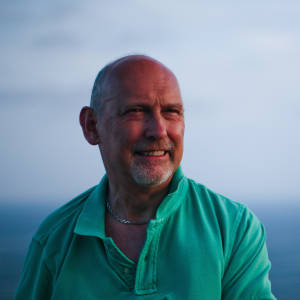Pilrig House
Pilrig House, built in 1638 for Gilbert Kirkwood appears to have been built at the fort's SW corner. Stonework in the basement walls suggest that the remains of a peel tower, from which the name Pilrig may derive, are incorporated in the house. The Balfour family were involved financially in the failed Darién expedition to colonise Panama in the late 17th century. As part of the Treaty of Union, landed investors were reimbursed in full in 1707. The Balfour family profited from this and became local entrepreneurs, running, amongst other things, a local stagecoach service. Robert Balfour bought Pilrig House in 1709 with the proceeds, and remodelled the house at that time. The house and estate remained in their possession until the 20th century, their name being recalled by Balfour Street, which links the park to Leith Walk.
One inhabitant of the house was Margaret Balfour, mother of Robert Louis Stevenson (fully, Robert Lewis Balfour Stevenson, with Lewis later changed to Louis). Stevenson would undoubtedly be very familiar with this house. The house is directly referred to in Stevenson's "Catriona" ( a plaque on the building refers to this) and may also be the inspiration for the "House of Shaws" in "Kidnapped", an association it shares with Cammo House and Cramond House.
Peripheral estate land was gradually feued to buyers. In 1920, when Edinburgh absorbed the formerly independent Leith, the remaining ground was part of the agreed "settlement" to be given to Leith as a public park. However, this did not fully materialise until the death of the remaining spinster sisters who lived in the house. It was eventually taken over by the local authority just before World War II, after which the house served variously as a fireman's hostel and hostel for homeless women until it became disused in 1970. Following two devastating fires it was virtually razed to the ground, but, with the help of grant aid, was meticulously rebuilt in 1984. Various 19th-century additions were removed to return its exterior to its original form of 1710. At this stage (no original interior remaining) it was divided into 6 flats, and new houses were built between it and Bonnington Road. At roughly the same time a huge railway embankment, which used to enclose the park on its west and north sides, was flattened. [Wikipedia]
Extra Photo: On the same day we walked past the former house of Thomas David Anderson (6 February 1853 – 31 March 1932) who was a Scottish amateur astronomer. He lived at 21 East Claremont Street, Edinburgh. He became a keen observer, and discovered two fairly well known novas: Nova Aurigae 1892 and Nova Persei 1901.

Comments
Sign in or get an account to comment.


